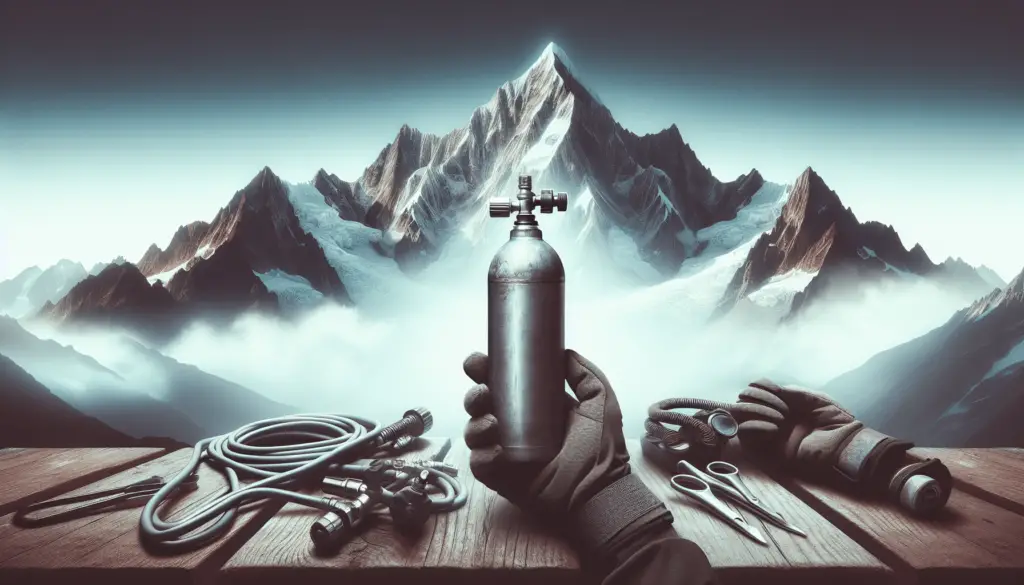Are you planning a trip to a destination with extreme altitudes? If so, you’ll need to prepare your body for the challenges that come with high altitude environments. In this article, we will provide you with valuable tips on how to survive and thrive in extreme altitudes through proper preparation and acclimatization techniques. Let’s dive in!
Understanding High Altitude Environments
Before we jump into preparation tips, let’s first understand what exactly constitutes high altitude environments. Altitudes above 8,000 feet are considered to be high, while altitudes above 12,000 feet are classified as very high. Extreme altitudes typically start at around 18,000 feet and can go up to the summit of Mount Everest at 29,032 feet.
Effects of High Altitude on the Body
At high altitudes, the air pressure decreases, leading to lower levels of oxygen in the air. This drop in oxygen can have various effects on the body, such as altitude sickness, difficulty breathing, dehydration, and increased heart rate. It’s crucial to understand these effects to prepare adequately for your journey.
Preparation Tips for Extreme Altitudes
Proper preparation is key to surviving in extreme altitudes. Whether you’re planning a trek to Everest Base Camp or a high-altitude adventure in the Andes, these tips will help you acclimate to the harsh conditions.
Physical Fitness
Before embarking on your journey to extreme altitudes, it’s essential to be in good physical shape. Regular cardiovascular exercise, strength training, and endurance activities can help prepare your body for the physical demands of high altitude environments.
Hydration
Staying hydrated is crucial at high altitudes, where the air is drier and dehydration can occur more rapidly. Be sure to drink plenty of water before your trip, and continue to hydrate throughout your time at altitude. Consider electrolyte supplements to maintain a proper balance of fluids in your body.
Nutrition
Proper nutrition is vital when preparing for extreme altitudes. Focus on consuming foods rich in carbohydrates, proteins, and healthy fats to fuel your body for the challenging conditions ahead. Avoid excessive caffeine and alcohol consumption, as they can exacerbate dehydration at high altitudes.
Altitude Training
If possible, consider undergoing altitude training before your journey to extreme altitudes. Altitude training simulates high altitude conditions and can help your body acclimate more quickly once you reach your destination. This type of training is particularly beneficial for athletes and adventurers seeking to optimize their performance at altitude.

Acclimatization Techniques
Acclimatization is the process of adapting to high altitude conditions to prevent altitude sickness and other adverse effects. By following these techniques, you can improve your body’s ability to cope with the challenges of extreme altitudes.
Gradual Ascent
One of the most critical acclimatization techniques is a gradual ascent to higher altitudes. Avoid rapid ascents, as they increase the risk of altitude sickness and other complications. Take your time to acclimate properly, allowing your body to adjust to the changing conditions slowly.
Rest and Relaxation
Rest is crucial at high altitudes, as your body requires more time to recover and acclimate. Plan for rest days during your ascent to allow your body to adapt to the reduced oxygen levels. Listen to your body’s signals and avoid overexertion to prevent altitude-related illnesses.
Stay Active
While rest is essential, staying active can also help improve your body’s ability to acclimate to high altitudes. Light physical activity, such as gentle hikes and stretching exercises, can stimulate circulation and aid in oxygen transport throughout the body. Balance rest and activity to optimize your acclimatization process.
Proper Breathing Techniques
At high altitudes, proper breathing techniques can help maximize your oxygen intake and improve your body’s ability to cope with reduced oxygen levels. Practice deep breathing exercises, inhaling slowly through your nose and exhaling through your mouth, to enhance oxygen exchange in your lungs.
Coping with Altitude Sickness
Altitude sickness is a common condition that can affect individuals who ascend to high altitudes too quickly. Recognizing the symptoms of altitude sickness and knowing how to cope with them is essential for staying safe in extreme altitude environments.
Symptoms of Altitude Sickness
Altitude sickness can manifest in various ways, including headache, dizziness, nausea, fatigue, and shortness of breath. If you experience any of these symptoms at high altitudes, it’s crucial to take immediate action to prevent the condition from worsening.
Treatment for Altitude Sickness
If you develop altitude sickness symptoms, the first step is to descend to a lower altitude to alleviate the effects of reduced oxygen. Rest, hydration, and proper nutrition can also help improve your condition. In severe cases, supplemental oxygen or medication may be necessary to treat altitude sickness.
Prevention of Altitude Sickness
To prevent altitude sickness, follow proper acclimatization techniques, stay hydrated, and listen to your body’s signals. Avoid ascending too quickly and allow your body time to adjust to the changing conditions. If you have a history of altitude sickness, consider consulting with a healthcare provider before your journey.

Packing Essentials for Extreme Altitudes
When preparing for a trip to extreme altitudes, packing the right gear and essentials is crucial for your safety and comfort. Here are some must-have items to include in your packing list for high altitude environments.
Clothing
Layered clothing is essential at high altitudes, where temperatures can fluctuate significantly. Pack thermal base layers, insulated jackets, waterproof outerwear, and sturdy hiking boots to protect yourself from the elements. Don’t forget items like gloves, hats, and sunglasses to shield yourself from the sun and wind.
Medications
If you have a history of altitude sickness or other medical conditions, be sure to pack any necessary medications for your trip. Consider over-the-counter remedies for altitude-related symptoms, such as headaches and nausea, to have on hand in case of emergency. Consult with a healthcare provider for personalized recommendations.
Sun Protection
UV radiation is stronger at high altitudes, increasing the risk of sunburn and skin damage. Pack sunscreen with a high SPF rating, lip balm with UV protection, and sunglasses to shield your eyes from harmful UV rays. Consider a wide-brimmed hat for additional protection against the sun.
First Aid Kit
A well-stocked first aid kit is essential for emergencies at high altitudes. Include items such as bandages, antiseptic wipes, pain relievers, blister pads, and any necessary prescription medications. Familiarize yourself with the contents of your first aid kit and know how to use them effectively in case of injury or illness.
Final Thoughts
Surviving in extreme altitudes requires proper preparation, acclimatization, and awareness of the challenges that come with high altitude environments. By following the tips outlined in this article, you can enhance your safety and enjoyment during your high-altitude adventures. Remember to prioritize your health and well-being at all times, and have a memorable and successful journey to extreme altitudes.
